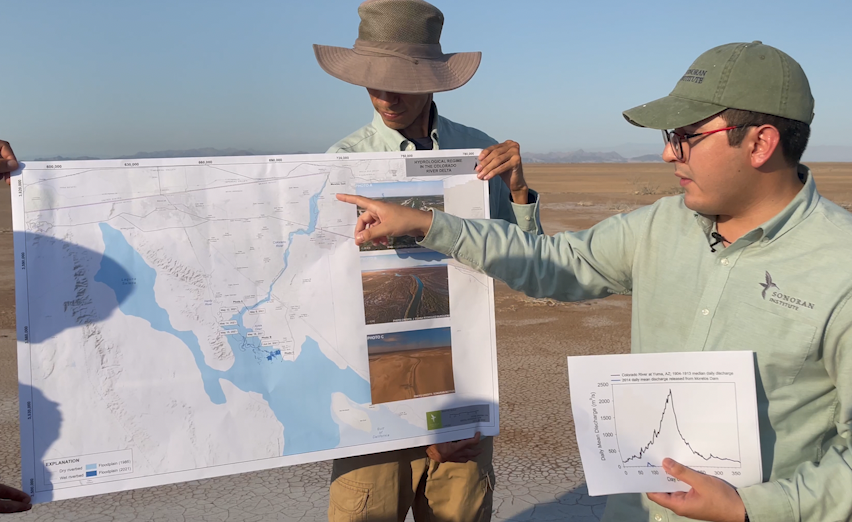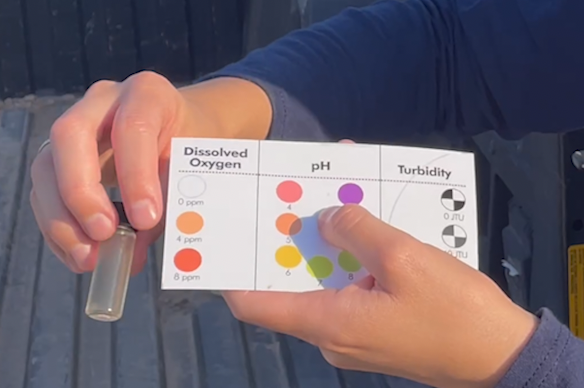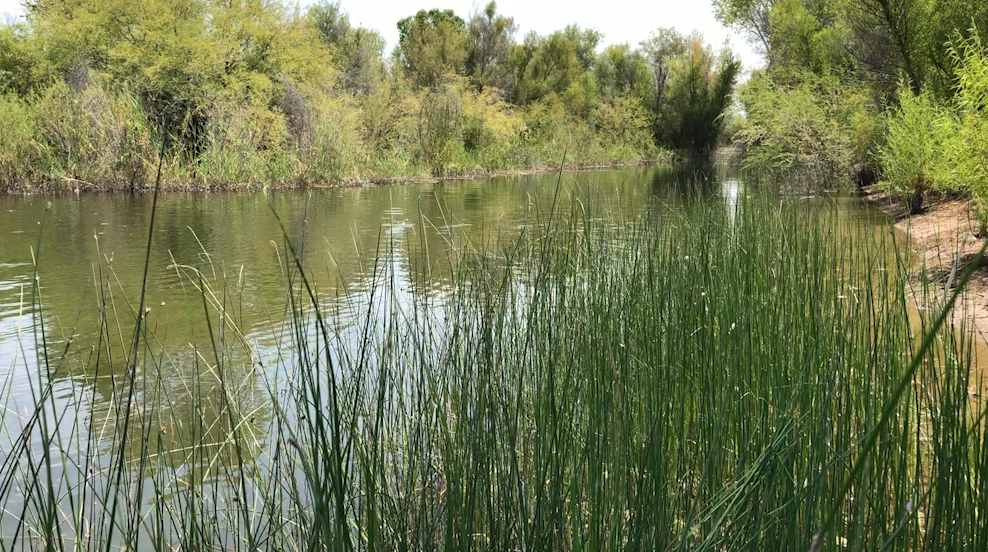SPECIAL REPORT: Rio Colorado is fading away with minimal life in Mexico
LAGUNA GRANDE, Baja California, Mex. (KYMA, KECY) - The Colorado River, which divides state lines between California and Arizona, is a main water source for many residents, but that also includes Mexico, our neighbors to the south and the hundreds of species that depend on this water.
The river used to run all the way from the Rocky Mountains to the Sea of Cortez in Mexico.
"One of the values that our society wants to have defended at this time is our nature and the river and all that it supports," said Jennifer Pitt, Colorado River Program director. "There are 380 bird species using the Colorado River Delta, and they’re some of the same birds that end up in Alaska, in Minnesota and the hunting grounds, so protecting these resources is important."
Protecting the Colorado River Delta is a domino effect that has a lasting impact on our local environment. The river is a resource for many southwestern U.S. states along with several parts of Mexico.
Coming up with a fair and sustainable agreement has been a challenge, according to the director of the Colorado River Delta Program Rocio Torres, but it's becoming a trial and error process.
"Even though it was completely dry, some parts of the river are back already, and we’re going to see that’s the important part," Torres explained. "That’s why human beings, we learn. We mess things up. We realize we shouldn’t have done that, and how do we bring it back to that."
The Colorado River used to flow all the way through the Sea of Cortez, but with declining water levels, less rainfall and lack of water conservation, the bodies of water no longer connect.
"This flows so this blue polygon show how was the flow plane in the 85s," stated Edgar Carrera, coordinator for the Colorado River Delta. "So, it needs to flow, overflow, the Reparen corridor all the way to Laguna Salida and hold the upper and lower story."

The goal of Revive El Rio is to connect the Colorado River to the sea in Mexico to restore ecosystems and bring in more life.
Gaby Caloca explains the chart that analyzes water samples and changes color by the amount of oxygen in the water.
"The quantity of life this water sample can support, so if there is a lot of oxygen there can be more life. Less oxygen, no life," Caloca stated.

As you can see, the sample is almost clear meaning there is no chance for living organisms to survive.
In 1944, the U.S. and Mexico signed a binational agreement, assigning water only to cities and agriculture, leaving nothing for the environment.
"For Mexico, living with a dead river has been, I’ll say sort of a wound, and this is a little bit of repair," Pitt explained. "That said, it was not easy to get that U.S.-Mexico agreement and it was reached in the context of Mexico agreeing to do things like share in shortages with water users in Arizona and Nevada and California."
The water in this area of Laguna Grande is less than 1% of what it used to be almost 100 years ago because of a treaty that was passed between the U.S. and Mexico back in 1944.

"Some people think that in conservation, why do we want to invest in that if we’re not going to see the changes, and you are," Torres stated.
That’s why Mexico is encouraging everyone to act now before we get knee-deep in a drought.
Animals, trees and humans are dependent on Colorado River water including beavers that prevent the water from flowing too quickly.
"They feed on the bark of the trees, mainly cottonwoods and willows, and they use the rest of the wood to make their dens which are floating dens, and then they build like a little dam," Caloca explained. "Why is this important? The beaver is like an umbrella species. If we save the beaver, we save a bunch of other species."
Once the dam prevents water from flowing in the meander, their den floats because the beaver's entrance is underneath.
Other wildlife like skunks, squirrels and rabbits rely on the floating dam to cross the river.
Salt grass is also dependent on river water, according to estuary restoration coordinator Tomas Rivas with the Sonoran Institute.
"When the water reached, it started to evaporate and look like a white area from salt from evaporation of the sea water," Rivas stated.
All the residue left from low water levels is salt, the only beneficial aspect for salt grass when water levels are low.
The plant lives in the estuary, a part that connects the river to the sea.
"The system of the irrigation channel, in order to move the water from the border to this area and share the water here, and that water goes to the sea," said Dr. Jorge Ramirez, with the Universidad Autónoma de Baja California.
About 40 miles south of the border is where the river ends.
"Behind me right now is water flowing from an irrigation canal. It’s actually Colorado River water that was diverted at the border and is here being returned to the river, and it’s actually going to flow or a little over four months into October," Pitt explained.
Every drop of water you can save helps restore the Colorado River Delta and bring back the life that used to call the river home.
